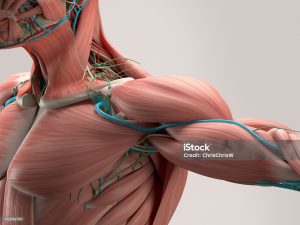
Ego lifting is killing your gains
Introduction
Ego-lifting is a common pitfall that many fall into at the gym, and today, I want to shed light on what it really means and how it could be holding you back from achieving your ideal physique. You’ve probably seen those individuals who make a spectacle of lifting excessively heavy weights, shouting and jerking the weights up and down with little regard for proper form. Instead of isolating the muscle they’re targeting, they end up involving their entire body in the movement. These individuals are not focused on muscle building; they are more interested in seeking validation from those around them. This is exactly the kind of behavior you should avoid in the gym. While there is a time and place for cheat reps—where you intentionally use a bit of momentum to lift a heavier weight—it should be a conscious choice, not a default approach. Cheat reps can be effective when done sparingly, such as with bicep curls or shrugs using heavier weights and a shorter range of motion. However, it’s crucial to limit this technique to one or two sets specifically designed to exhaust the muscle, rather than applying it to every set you perform.

No muscle involvement
If you make ego lifting a habit for every set, you’ll find yourself struggling to build muscle effectively because you’re not truly engaging the muscle you intend to work. Take bicep curls as an example. If you load the bar with more weight than you can properly handle, you end up relying on your whole body to lift it—jerking up and down, using momentum, and recruiting muscles beyond your biceps, like your lower back and legs, to complete the movement. This means that only about 20 to 30% of the effort is actually coming from your biceps, with the rest of your body taking over. Essentially, you’re turning what should be a muscle-building exercise into a cardio session. If cardio is your goal, then there are better options, like hitting the treadmill. But if you’re serious about building muscle, ego lifting has no place in your routine. Focus on proper form and the right weight to truly target the muscles you want to develop.

Beginner’s mindset
The primary reason people engage in ego lifting isn’t because they believe it will help them grow muscles—it’s because they want to show off. They’re more interested in impressing others by demonstrating their ability to lift heavy weights than in making real progress in their muscle development. Seeking validation and attention, they prioritize appearance over effective training. However, in all my experience, I’ve never seen an ego-lifter with a well-developed physique. The key to building muscle is controlling the weight throughout the movement. If you’re not controlling the weight and instead relying on momentum, you’re failing to properly engage the muscle you’re targeting.
It’s crucial to focus on performing slow and controlled reps to truly work the muscle. That doesn’t mean you can’t incorporate explosive movements into your routine—many people with impressive physiques use explosive techniques effectively. For example, you can perform slow reps during the eccentric phase (lowering the weight) and be more explosive during the concentric phase (lifting the weight), or even incorporate explosiveness in both phases. The variations are plenty, and each has its place in a well-rounded workout. The important thing is to avoid using momentum as a crutch, as it takes the focus off the specific muscle you’re trying to build and undermines your efforts.

Showing off in gym
Leave your ego at the door when you step into the gym. It’s important to realize that no one is really paying attention to you as much as you might think. If you believe that showing off and seeking validation from others will earn you some sort of reward, you’re mistaken. While it might temporarily inflate your ego, the harsh reality is that no one cares. Everyone in the gym is preoccupied with their own insecurities, thinking that others are watching them, too. So, you’re not alone in feeling like all eyes are on you.
Understanding this can free you from the pressure to impress others. Whether you’re lifting 100 pounds or 200 pounds, it truly doesn’t matter to anyone else. What matters is that you’re in the gym, pushing yourself, and working toward building a great body. Once you achieve that, you won’t need to seek anyone’s approval. Proper form may not look as impressive as heaving heavy weights, and you might feel self-conscious or think others are judging you for not lifting as much. But those doubts are only in your head. The truth is, everyone else is too focused on themselves to worry about what you’re doing.

Even if you crave validation from others, it’s crucial to understand that proper form with lighter weights is what will eventually allow you to lift heavier weights with the right technique and build substantial muscle. Start by mastering the basics. Why rush into lifting heavy weights in your first week at the gym? Take the time to learn the correct techniques with lighter weights. As you progress, you’ll naturally become stronger and more muscular, and then you can confidently move on to heavier weights. This approach not only helps you build muscle but also ensures you’re lifting weights effectively and safely.
When you stop worrying about the opinions of those around you and focus solely on your own goals and workout routine, that’s when people start to notice. They respect the individual who is dedicated, authentic, and committed to their own progress. On the other hand, someone who constantly seeks validation from others is often not respected at all. The truth is, if you focus on yourself and your own growth, the respect and recognition from others will follow. The most respected individuals are those who remain steadfast in their purpose, not those who seek approval from the crowd. So, prioritize your own progress, avoid ego lifting, and you’ll not only build muscle but also earn the respect of those around you.
Risk of injury
Another significant downside of ego lifting in the gym is the heightened risk of injury. When you try to lift weights beyond your capacity using momentum, the likelihood of getting injured skyrockets. Proper form, where you control the weight without relying on momentum, drastically reduces this risk. If you search online for videos of gym accidents, you’ll notice that in nearly all cases, the injuries occur when people attempt to lift more weight than they can handle and lose control of it. The momentum or lack of control often leads to serious injuries.
By leaving your ego out of the gym, you’re not only working towards building solid muscles but also protecting yourself from potentially severe injuries. An injury can sideline you from the gym for an extended period, halting your progress. Staying injury-free is crucial for continuous improvement. Most people who regularly go to the gym will experience some form of injury at some point, whether minor or major. Shoulder injuries, particularly in the rotator cuff, are common when doing exercises like chest or shoulder presses, often because beginners don’t yet know how to lift with proper form. However, when you use the correct technique, the chances of injuring your shoulders or any other part of your body are significantly lower.
Avoiding ego lifting not only helps you stay injury-free but also allows you to make consistent progress. While those who ego lift might appear energetic and hyped up in the gym, often their efforts are misplaced. The energy they exert doesn’t contribute effectively to building the muscles they intend to target. So, don’t worry about what others are doing. Focus on your own workout, maintain proper form, and avoid ego lifting. This approach will lead to better muscle development and long-term success in your fitness journey.



